GetStudySolution
Getstudysolution is an online educational platform that allows students to access quality educational services and study materials at no cost.
NCERT Solutions for class 7 Maths chapter 15 – Visualizing Solid Shapes
Back Exercise
Exercise 15.1
Question 1.
Identify the nets which can be used to make cubes (cut out copies of the nets and try it):
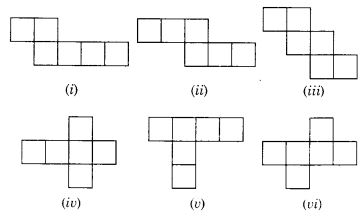
Solution:
(ii), (iii), (iv) and (vi).
Question 2.
Dice are cubes with dots on each face. Opposite faces of a die always have a total of seven dots on them. Here are two nets to make dice (cubes); the numbers inserted in each square indicate the number of dots in that box.

Solution:
Insert suitable numbers in the blanks, remembering that the number on the opposite faces should total to 7.
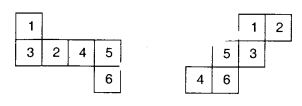
Question 3.
Can this be a net for a die? Explain your answer.
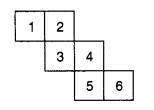
Solution:
No, this cannot be a net for a die. Because one pair of opposite faces will have 1 and 4 on them and another pair of opposite faces will have 3 and 6 on them whose total is not equal to 7.
Question 4.
Here is an incomplete net for making a cube. Complete it in at least two different ways. Remember that a cube has six faces. How many are there on the net here? (Give two separate diagrams. If you like, you may use a squared sheet for easy manipulation).

Solution:
In the net given here three faces are shown.
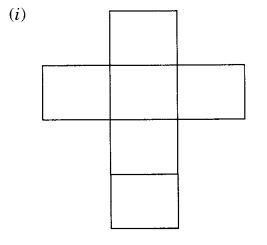
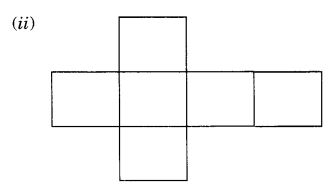
Question 5.
Match the nets with appropriate solids:

Solution:
(a) ↔ (ii)
(b) ↔ (iii)
(c) ↔ (iv)
(d) ↔ (i)
Exercise 15.2
Question 1.
Use isometric dot paper and make an isometric sketch for each one of the given shapes :
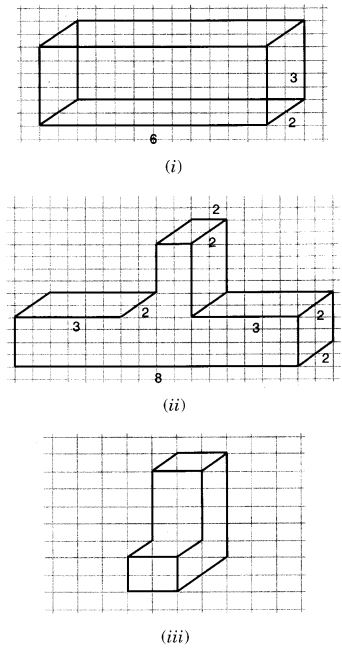
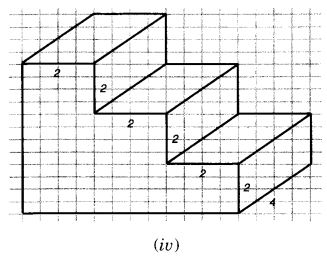
Solution:

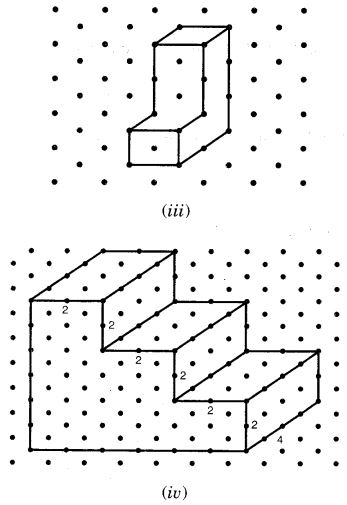
Question 2.
The dimensions of a cuboid are 5 cm, 3cm and 2cm. Draw three different isometric sketches of this cuboid
Solution:
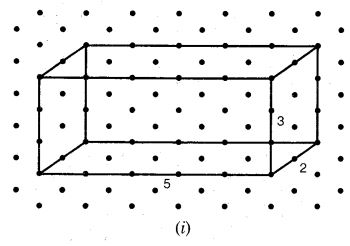

Question 3.
Three cubes each with 2 cm edge are placed side by side to for,n a cuboid. Sketch an oblique or isometric sketch of this cuboid.
Solution:
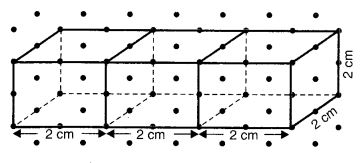
Question 4.
Make an oblique sketch for each one of the given isometric shapes :

Solution:
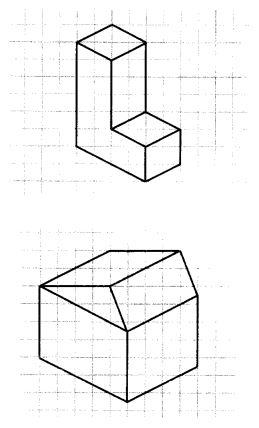
Question 5.
Give (i) an oblique sketch and (ii) an isometric sketch for each of the following:
(a) A cuboid of dimensions 5 cm, 3 cm and 2 cm. (Is your sketch unique?)
(b) A cube with an edge 4 cm long.
Solution:
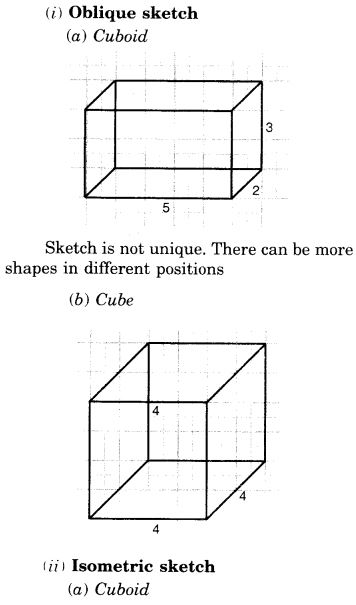
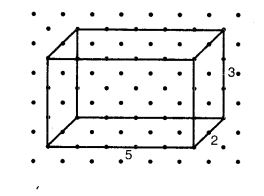
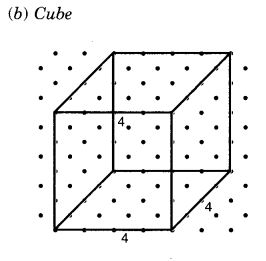
Exercise 15.3
Question 1.
What cross-sections do you get when you give a
(i) vertical cut
(ii) horizontal cut to the following solids?
(a) A brick
(b) A round apple
(c) A dice
(d) A circular pipe
(e) An ice cream cone.
Solution:
| S.No. | Vertical Cut | Horizontal Cut |
| (a) | (i) rectangle | (ii) rectangle |
| (b) | (i) circle | (ii) circle |
| (c) | (i) square | (ii) square |
| (d) | (i) circle | (ii) rectangle |
| (e) | (i) triangle | (ii) circle |
Exercise 15.4
Question 1.
A bulb is kept burning just right above the following solids. Name the shape of the shadows obtained in each case. Attempt to give a rough sketch of the shadow. (You may try to experiment first and then answer these questions):
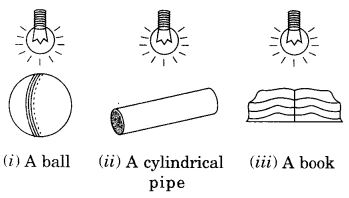
Solution:
- a circle.
- a rectangle.
- a rectangle.
Question 2.
Here are the shadows of some 3-D objects, when seen under the lamp of an overhead projector. Identify the solid(s) that match each shadow. (There may be multiple answers for these!)
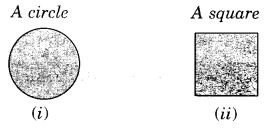
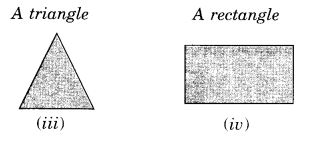
Solution:
- → Sphere, cylinder
- → Cube, cuboid (of the square end)
- → Cone, the prism of the triangular base
- → Cylinder, the prism of the square base
Question 3.
Examine if the following are true statements:
- The cube can cast a shadow in the shape of a rectangle.
- The cube can cast a shadow in the shape of a hexagon.
Solution:
- True, the cube can cast a shadow in the shape of a rectangle.
- False, the cube can not cast a shadow in the shape of a hexagon.